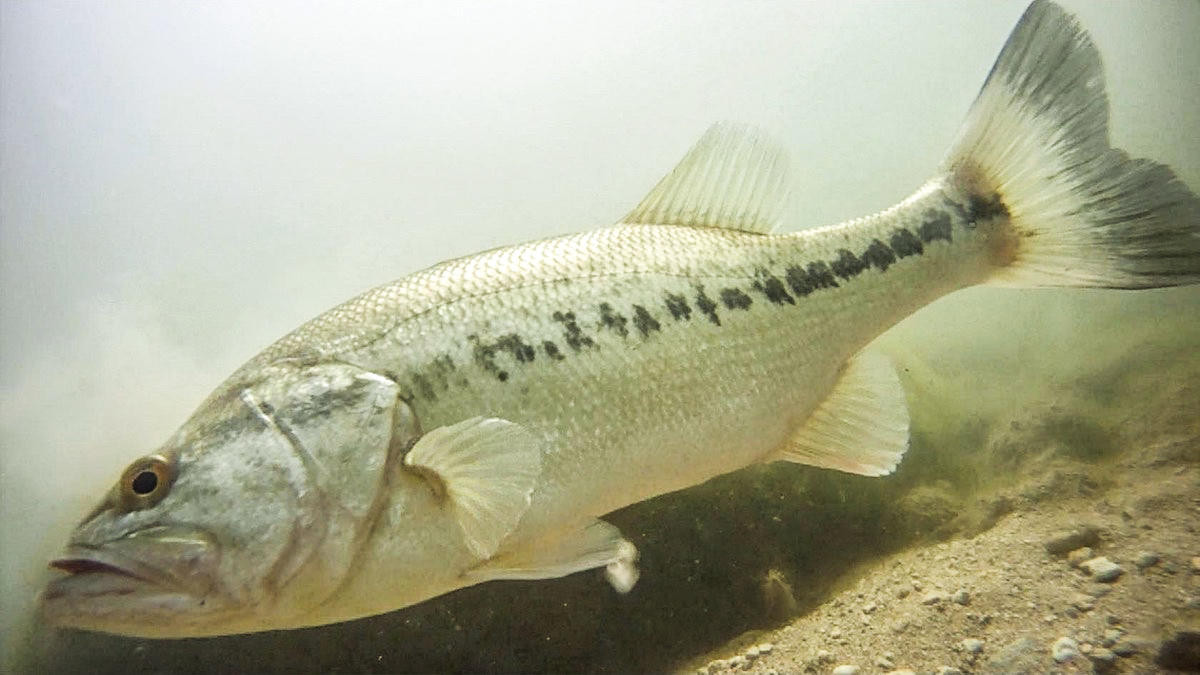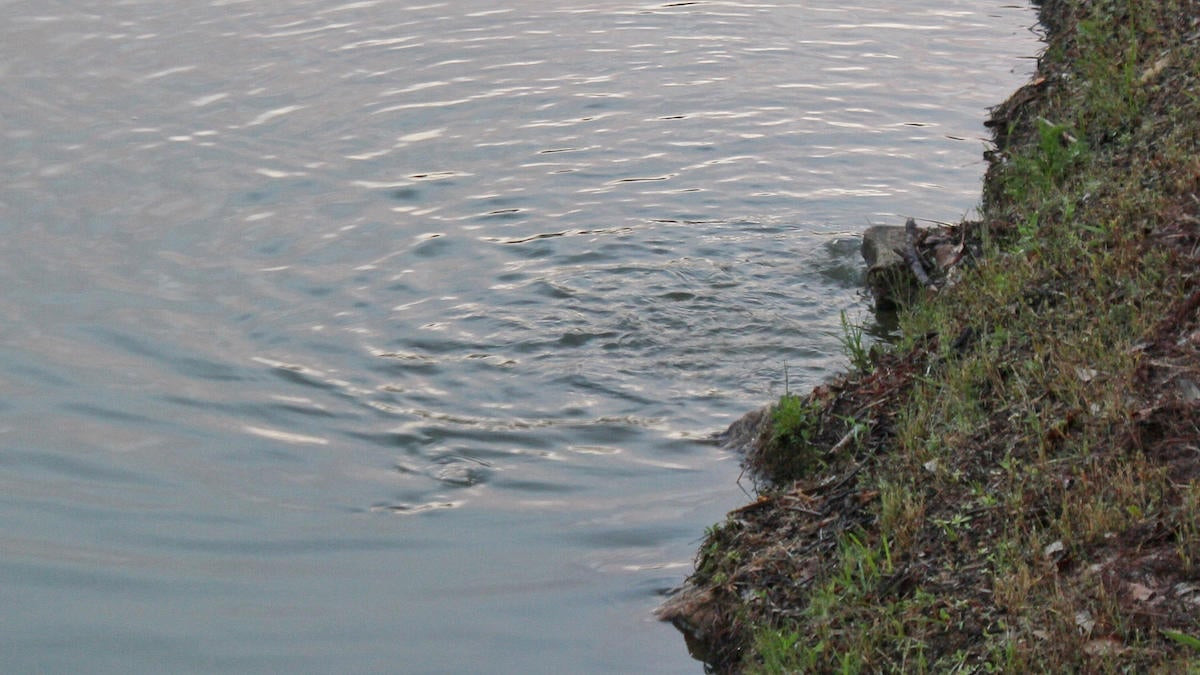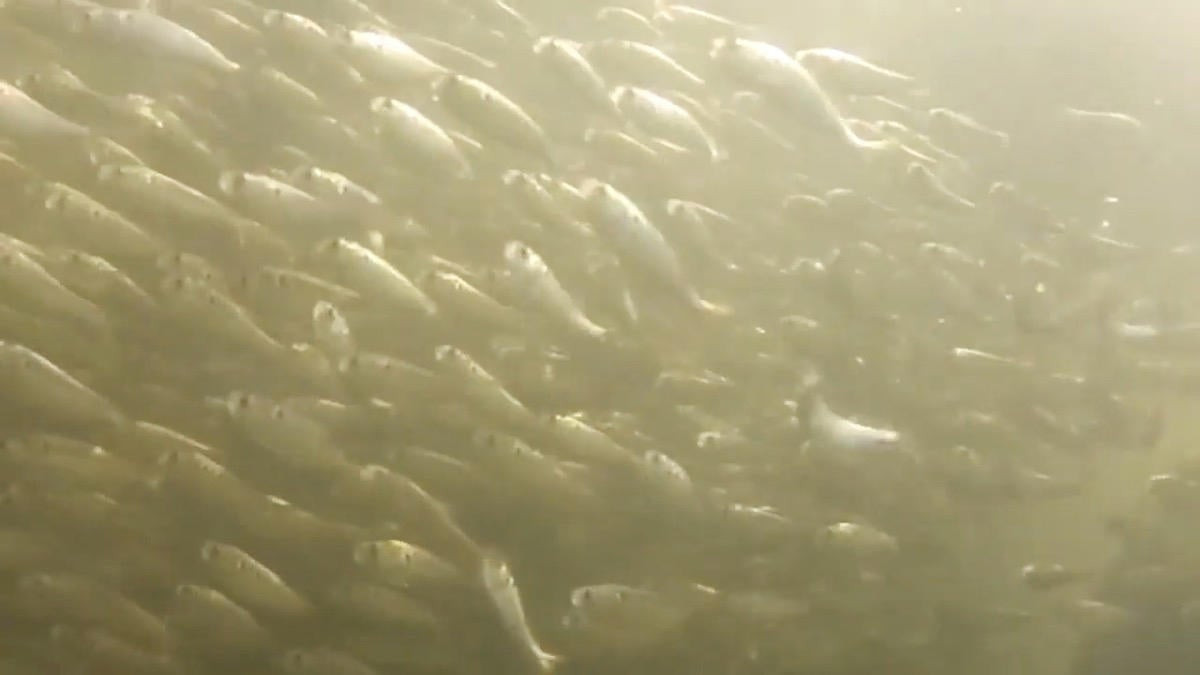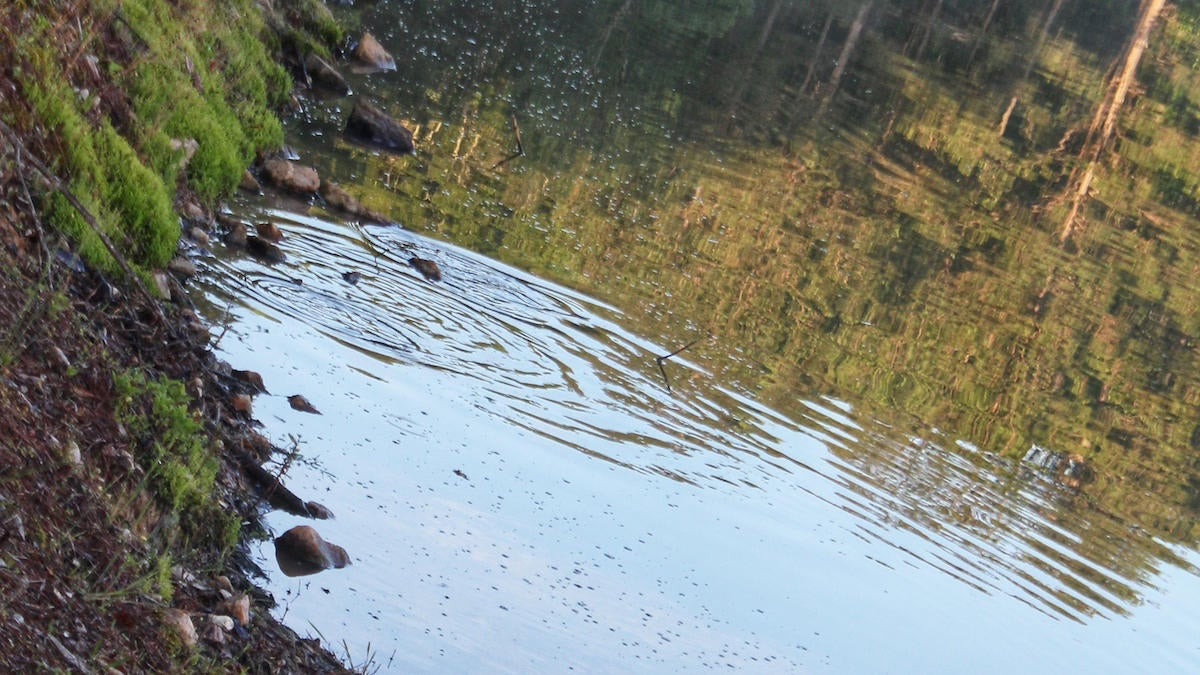The most exciting short period of time you’ll ever experience in all of bass fishing lies within a good shad spawn. I’ve only gotten on this deal a few times in over three decades spent on the water but in those few times, there was more action packed into a handful of minutes than weeks and even months of fishing other times of the year. The only problem is that it is so short lived.
For those who don’t know what a shad spawn is, it occurs each year towards the end of the bass spawning period. For a few days or sometimes weeks, each morning right at daylight the shallows come alive with thousands of shad rubbing along some type of cover to lay their eggs. As these little morsels are solely focused on the reproductive task at hand, nearby bass take full advantage and unload on them.
These shad spawns will be scattered in various places throughout a fishery but locally each one occurs in the same place for a few days typically. So in the beginning, a couple bass will find the shad. Then as those bass bust the bait, more nearby and passing bass hear the commotion and join in. Eventually the shad spawn will reach its fever pitch where there are loads of bass and loads of shad and it’s an absolute free-for-all frenzy.
Make the most of it while you can
As previously stated, I’ve seen this go down first-hand a few times. The most memorable occurred during an EverStart (now Toyota Series) in 2012 on Lake Seminole. I found an area early on Monday morning with a few fish breaking the surface. But honestly, there wasn’t a lot to it and I didn’t even see many shad. With the tournament starting on Thursday though and not much else to go on, I decided to go back and check the area one more time Wednesday morning. What I experienced that morning was the most unbelievable thing I’ve ever seen in bass fishing.
My dad got to town the day before and was fishing the event as a co-angler, so he tagged along for the last day of practice. As we started into this area, I told him I had had a couple bites in there and not to set the hook if he got a bite because I planned to fish it the next day. He said something smart about not having been able to be there fishing like I had all week and if he got a bite, he was setting the hook. I rolled my eyes and hoped he was just kidding, as he often was. I had a Stanley Ribbit tied on with the hook buried deep in the plastic so I at least wouldn’t accidentally hook one and that was all that was really in my control.
As we turned the corner into this area, the surface of the water was in full blown and constant commotion. Bass, and big ones, were literally coming out of the water as they exploded on bait. I fired my Ribbit up to the line of hyacinth where the shad were spawning and within two turns of the handle a fish between 4 and 5 pounds came out of the water as it ate my bait. I held my rod tight as the fish swam 5 or 6 feet and finally let it go.
In the amount of time it took for that to transpire and me to reel my frog in, another 10 to 15 fish had blown up the surface. I fired back into the general direction of one of those bigger blowups and another big one ate my frog immediately. In little more than 5 minutes, I shook off a five-fish limit somewhere between 18 and 22 pounds. I was so caught up in the moment that I hadn’t even thought about dad being in the boat with me. I turned to see him sitting in the back seat, his rod still laid across his lap with his bait hooked on his reel and his mouth open in sheer disbelief of what we had both just experienced.
Then just like that, it was over.
The shad stopped flicking along the grass edge. The bass stopped blowing up. All that was left was a frothed up pocket with bubbles all along the surface and the two of us looking at one another dumbfounded. Obviously, I knew where I was starting the next morning. I ran into that pocket on day one, caught 18 pounds in about 15 minutes and the bite totally shut down. Now to talk about what this article is really all about, what do you do after the shad spawn is over.
After the morning bite, what now?
So, the natural instinct when you watch dozen of bass blowup in an area and know you’ve only caught a fraction of what’s there, is to settle in and pick that area apart, figure out a way to make the most of the area and put a few more fish in the boat. From my experience, this proved absolutely futile.
I camped in that area for the next three hours that day. I had a pretty good bag and figured it would be a good time to try to figure out how to catch them in there when they weren’t actively busting on the shad. What I found, is that as active as those fish were for the first few minutes of the day, they were that inactive for the rest. For three hours, I tried everything from punching the hyacinth to dead-sticking a Fluke and all my efforts only landed one more 14-incher. I could not believe how hot and cold that group of fish was but I had no choice but to believe it.
So staying in the same area wasn’t the answer, regardless of how many fish I knew were there just below the surface. It was time to do something else. I had another bite going about a 25-minute run away from where I was, but with the bag I had I didn’t want to risk running that far when it would have been hard to cull up anyway. I still fished my butt off in that general area the rest of the day, and through the process of elimination I learned what not to do after the morning bite dies: stay in a section of the fishery where the shad spawn is prevalent.
Day 2, I ran straight to that same shad spawn and it was almost over before I could even get there. I think I caught three fish for about 5 pounds and was completely devastated. Now it was time to see what that other bite down the lake had in store. I made the 25-minute run with my head reeling in a full panic, knowing how tough the bite had been the day before after the shad spawn had died and how tough it had been all through practice up in the day. All except for this one area where I was headed. When I got there, I added the majority of my weight for the day and limped my way to a 15-pound bag.
The key to that day, and what I would highly recommend to anyone trying to survive a day of fishing after the shad spawn dies down, is to run completely away from it and look for fish not relating to a shad spawn at all. For me that day, it was a series of vast, shallow points with scattered hydrilla where post spawn bass were relating to needle fish.
This was the first time I had found bass relating to needle fish and the first time I had even seen needle fish for that matter. But in practice, I saw these long, skinny fish skipping along the surface and fired a big topwater in their direction a few times throughout the day, inevitably catching a few fish including a post-spawn 5-pounder with a 7-pound head. So that clued me in on what to do.
It’s likely there were also bluegill in the area, and maybe even a few shad. But the shad spawn definitely wasn’t the key thing happening there, so the fish weren’t focused on it at all. They weren’t able to gorge themselves in the morning. They were still the same old opportunistic bass you usually have to resort to fishing for everyday. Which is just what I needed to survive the day. To wrap up the rest of the long story, I stayed in the top 10 that day and ran back to the shad spawn on day three where I caught another quick 15 pounds and wound the event up in 4th place. Now for other things to look for after the shad spawn dies down.
Find fish in a different phase
This is kind of saying the same thing in a different way, but I want to expound on the idea a bit more because there’s a lot more to it than what was contained in that one tournament experience. To find fish in a different phase, you want to look for different water.
If the area has gotten a lot of rain throughout the spring, run way up a river or creek where the cold and muddy water will have delayed the bass spawn a bit and you can focus on flipping cover blindly for spawners or maybe even catch a few fish that are still prespawn, even though the bass spawn is wrapping up down the lake and the shad spawn is in full swing.
Or, if the shad spawn is happening up a river or creek like this, you can then usually run down the lake after the morning bite and catch fish that are already starting to get into the post spawn, offshore mood. Target those first few fish in the shallow brush with drop shots, shakey heads and crankbaits.
The bluegill spawn also isn’t usually far behind the shad spawn, so you may be able to fish the shad spawn early up a river in colder water and then run down the lake where the water is 7 or 8 degrees warmer and the bluegills are already starting to spawn in pockets, where you can target bass with a big topwater all day.
Though I almost never recommend running away from fish to find fish, the shad spawn is certainly the biggest exception to that rule. Once that bite dies in the morning, it’s almost completely pointless in my experience and from talking to other anglers who have even more experience in this realm. You’re better off to run away. Try to find the last few bass spawning. Pick up a buzzbait and cover water. Start exploring the offshore spots. It’s a funky and tough time of the year, so you’re probably still not going to get many bites. But not many is still better than not any and camping where the shad spawn was after it dies down is like fishing for ghosts.
In conclusion
Again, you have to make the most of a shad spawn while you can. Though I got those bites on a frog in practice, I actually caught all my fish off the shad spawn in the tournament on a spinnerbait. That’s one great way to make the most of it; pick a subsurface bait that you’ll get several bites on and have a better hookup ratio with instead of choosing to throw a topwater like a Spook that fish have to do a little more to commit to and you’re more likely to lose one on. Though sometimes something like a Spook is all they’ll hit, so you just kind of have to make the most of it in every situation.
Then, after that bite dies, do like Jenny wanted to in Forrest Gump and run far… far far away. Find a completely different section of the fishery where the fish are in a completely different phase and you’ll be more likely to scratch out a few more bites throughout the day. Because again, those fish full of shad are hard to get to bite. If by some chance you have figured out how to catch shad spawn fish during the day, I highly suggest you keep that information to yourself, log off whatever device you’re reading this article on right now and go enter as many tournaments as you can find for the next few weeks.
And then shoot me a DM on the secret. You can trust me with it, just no one else.
















